
The 99th Aero Squadron was an Air Service, United States Army unit that fought on the Western Front during World War I.

The 103rd Aero Squadron was an aviation pursuit squadron of the U.S. Air Service that served in combat in France during World War I. Its original complement included pilots from the disbanded Lafayette Escadrille and Lafayette Flying Corps. One of those pilots, Paul F. Baer, became the first ace of an American unit in World War I.

The 104th Aero Squadron was an Air Service, United States Army unit that fought on the Western Front during World War I.

The 138th Aero Squadron was a United States Army Air Service unit that fought on the Western Front during World War I.

The Second Army Air Service was an Air Service, United States Army unit that fought on the Western Front during World War I as part of the Air Service, Second United States Army. It was demobilized in France on 15 April 1919 with the demobilization of the United States Second Army. There is no modern United States Air Force unit that shares its lineage and history.

The III Corps Observation Group was a United States Army Air Service unit that fought on the Western Front during World War I as part of the Air Service, First United States Army. It was demobilized on 12 May 1919. There is no modern United States Air Force unit that shares its lineage and history.
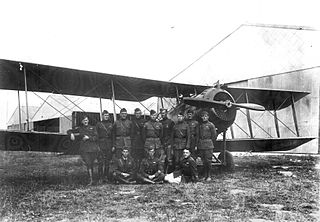
The V Corps Observation Group was an Air Service, United States Army unit that fought on the Western Front during World War I as part of the Air Service, First United States Army. It was demobilized in France on 15 February 1919. There is no modern United States Air Force unit that shares its lineage and history.

The Organization of the Air Service of the American Expeditionary Force on 11 November 1918, represents its maximum strength in World War I. Units of the Air Service are listed as assigned to the order of battle for that date, which was that of the Armistice with Germany. The first air unit arrived in France in September 1917, while the final air unit reaching the front did so on 9 November 1918. Unit operations began in April 1918. At the armistice, 57,508 officers and men served in the Air Service of the AEF, 24,512 in the Zone of Advance, and 32,996 in the Services of Supply. Of its 6,861 officers, 4,088 were on flying status and 219 were qualified observation balloon aviators. 1,724 of those on flying status and approximately 100 of the balloonists served in combat units.

Vaucouleurs Aerodrome, was a temporary World War I airfield in France. It was located 2.1 miles (3.4 km) West-Northwest of Vaucouleurs, in the Meuse department of France, located approximately 300 km (190 mi) from Paris.
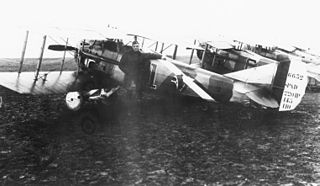
Lisle-en-Barrois Aerodrome was a temporary World War I airfield in France. It was located on the plateau north of the commune of Lisle-en-Barrois, in the Meuse department in north-eastern France.

Amanty Airdrome was a temporary World War I airfield in France, used briefly by French units, thereafter by squadrons of the Air Service, United States Army. It was located 1 mile (1.6 km) northwest of Amanty, in the Meuse department in the Lorraine region in northeastern France (48.527383,5.598371).

Vavincourt Aerodrome, was a temporary World War I airfield in France. It was located 0.5 miles (0.80 km) south of Vavincourt, in the Meuse department in north-eastern France.
Belrain Aerodrome was a temporary World War I airfield in France, initially used by French units, and later by squadrons of the Air Service, United States Army. It was located 0.7 miles (1.1 km) South of Belrain, in the Meuse department in the Lorraine region in northeastern France.
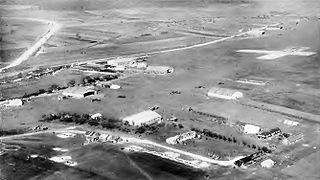
Souilly Aerodrome was a temporary World War I airfield in France. It was located 1 mile (1.6 km) Northeast of Souilly, in the Meuse department in north-eastern France.

Remicourt Aerodrome was a temporary World War I airfield in France. It was located 1.2 miles (1.9 km) West of Remicourt, in the Marne department in north-eastern France.
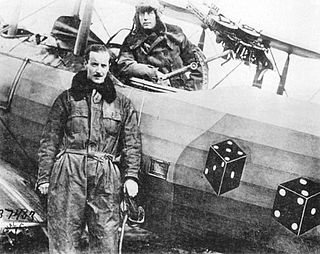
Béthelainville Aerodrome was a temporary World War I airfield in France, used by squadrons of the Air Service, United States Army. It was located 0.5 miles (0.80 km) Southwest of Béthelainville, in the Meuse department in the Lorraine region in northeastern France.
Pretz-en-Argonne Aerodrome, was a temporary World War I airfield in France. It was located near the commune of Pretz-en-Argonne, in the Meuse department in Lorraine in northeastern France.

The 213th Aero Squadron was a United States Army Air Service unit that fought on the Western Front during World War I.
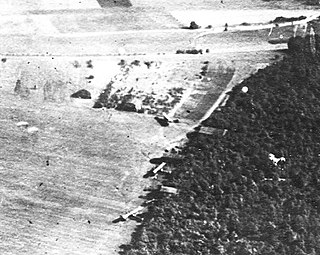
Autreville Airdrome was a temporary World War I airfield in France, used by the United States First Army Air Service. It was located 9 miles (14 km) south of Toul, at the northern tip of the Vosges department in northeastern France, near the large depot of Colombey-les-Belles.

Chaumont-Hill 402, was a temporary World War I airfield in France, used by squadrons of the Air Service, United States Army, and named after the height of its highest point. It was located East South East of the city of Chaumont, in the Haute-Marne department in the Champagne-Ardenne region of north-eastern France, between the main road and the "Ferme d'Heurtebise", 0.5 miles (0.80 km) west of the village of Laville aux Bois.



















